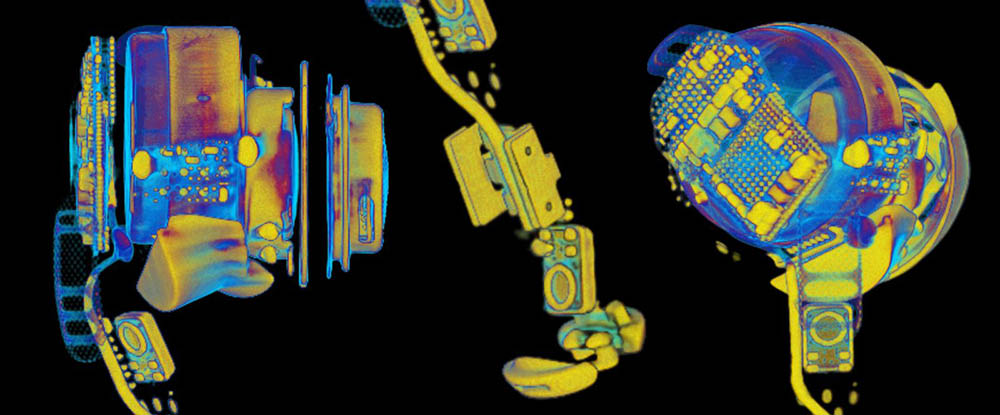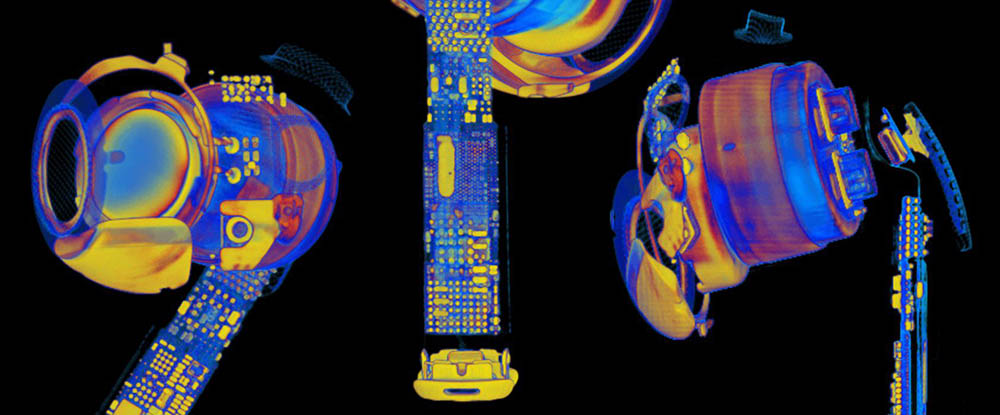The CT scans show how the first-generation AirPods differ from the later models. Initially, there was still a large battery in the stem, while the stem of the latest AirPods 3 mainly consists of printed circuit boards. The battery has now been moved to the head. In any case, it becomes clear that the internal design has been significantly changed to make room for new functions. The biggest challenge was getting the tiny internal components in the right place.
With the first generation AirPods (left), the battery was the largest component. The cup contains the H1 chip, while a single microphone is present at the very bottom. With the AirPods Pro (center), the parts were in a completely different place. The stem is shorter, so the battery had to be incorporated in the head, which is also a lot larger.


Apple made certain parts smaller by putting them together in a single PCB (printed circuit board). Adaptive EQ required an additional microphone in the head. In the stem, Apple moved the microphones to a higher position. You can also see the pressure sensors in the stem for operation: by squeezing the stem you can pause the music, activate Siri and more.


CT scan the AirPods Pro.
In the third generation of AirPods that appeared this year, the AirPods Pro were carefully considered. This time, however, the stem is completely filled with electronics and sensors. The battery is now in the head, along with new skin contact sensors.


CT scan the AirPods 3.
With the next generation AirPods Pro, which is expected in 2022, Apple would look for a completely different approach, where the stem disappears completely. Apple then has to process all components and the battery in the head and that will be quite a challenge. More images can be found on this website, where a different product is placed under the CT scanner every month.